
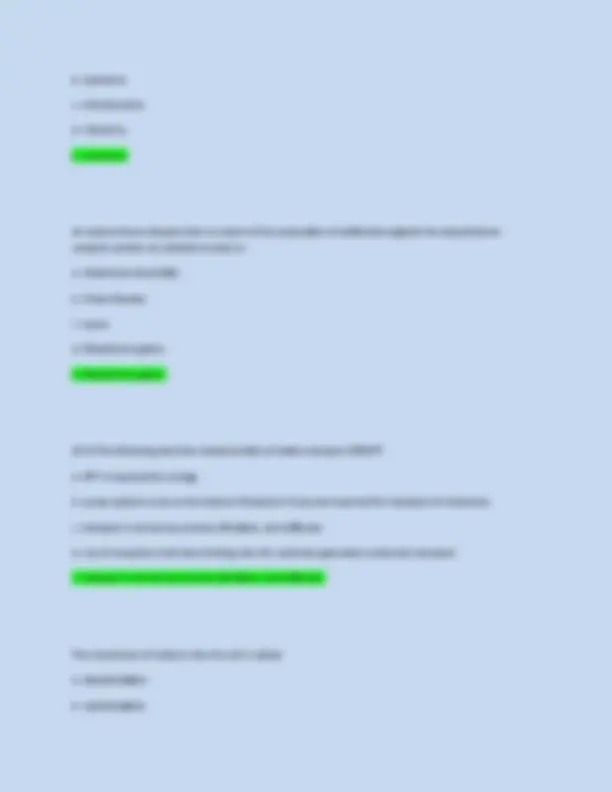
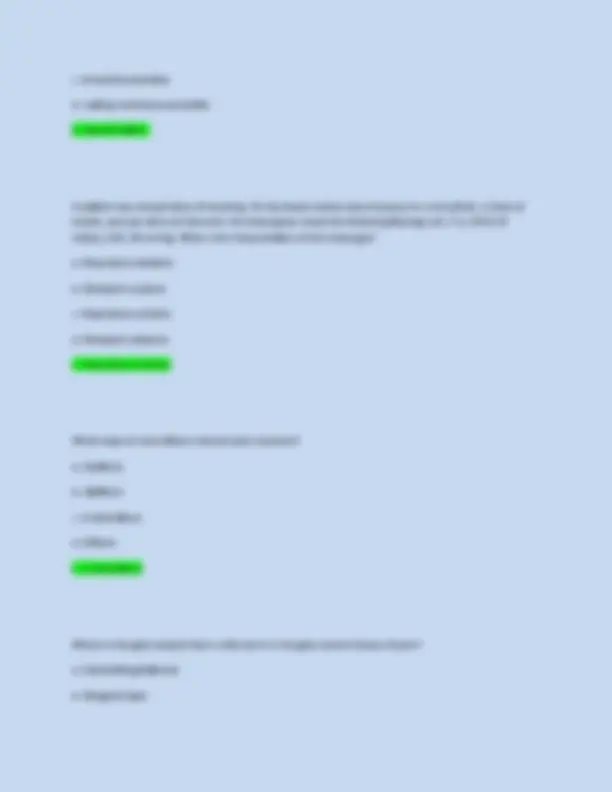
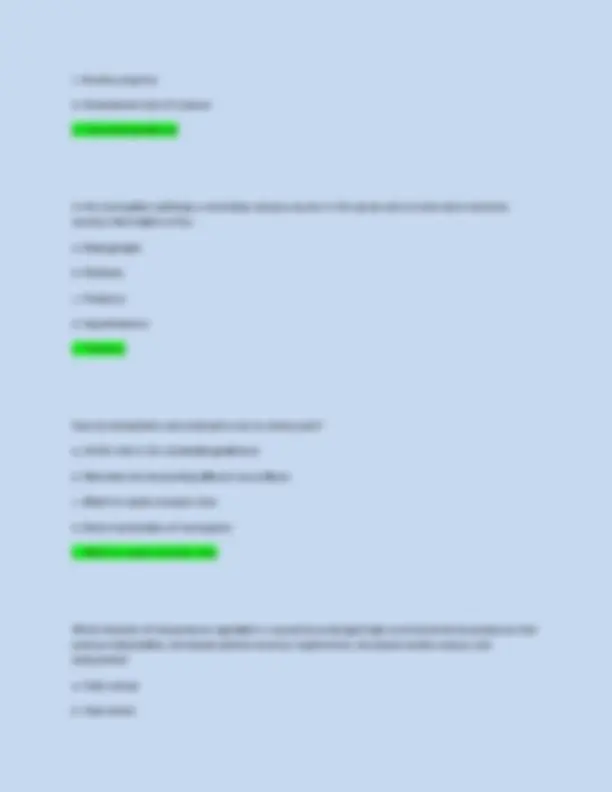
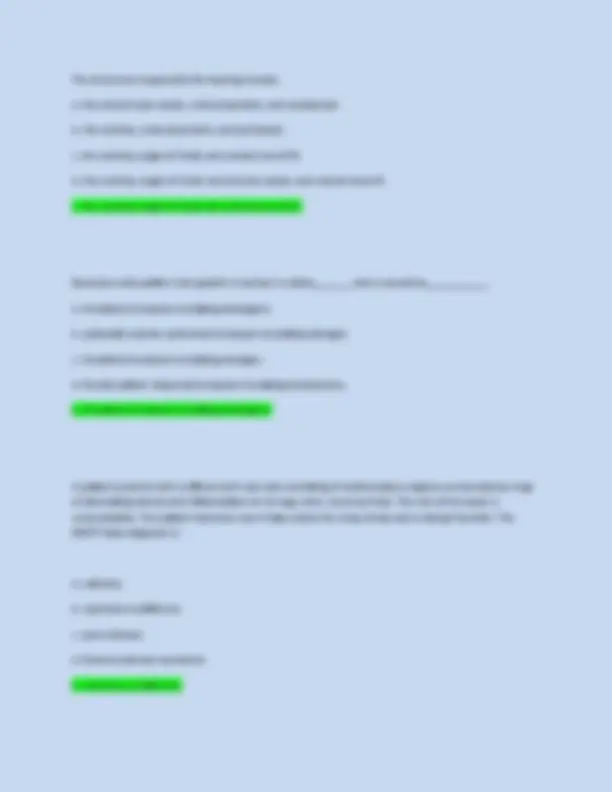
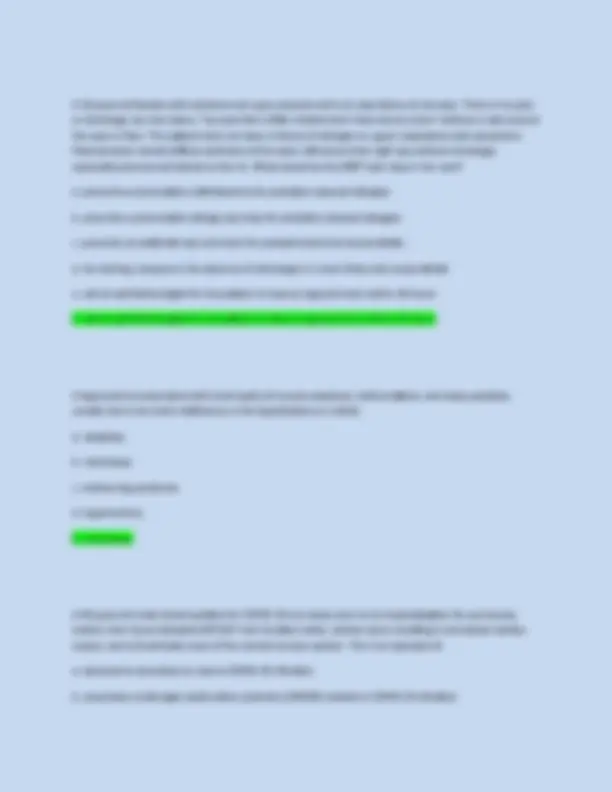
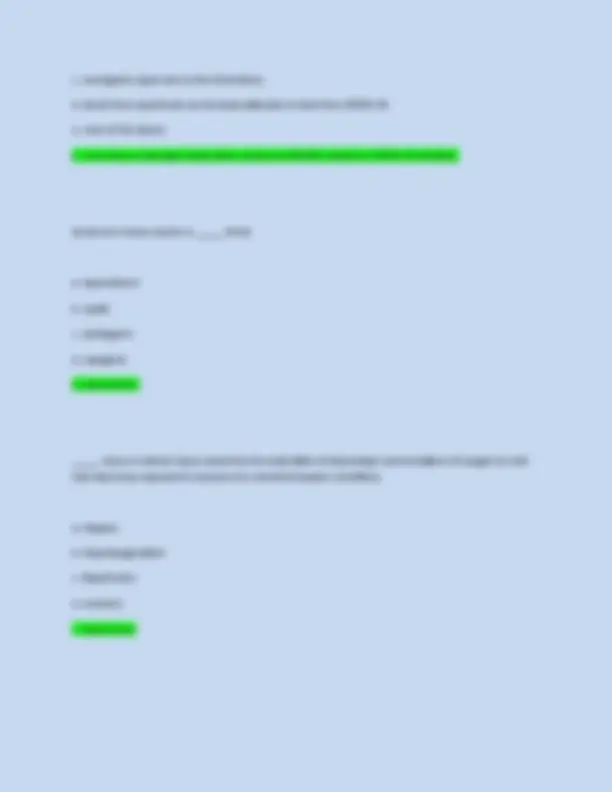
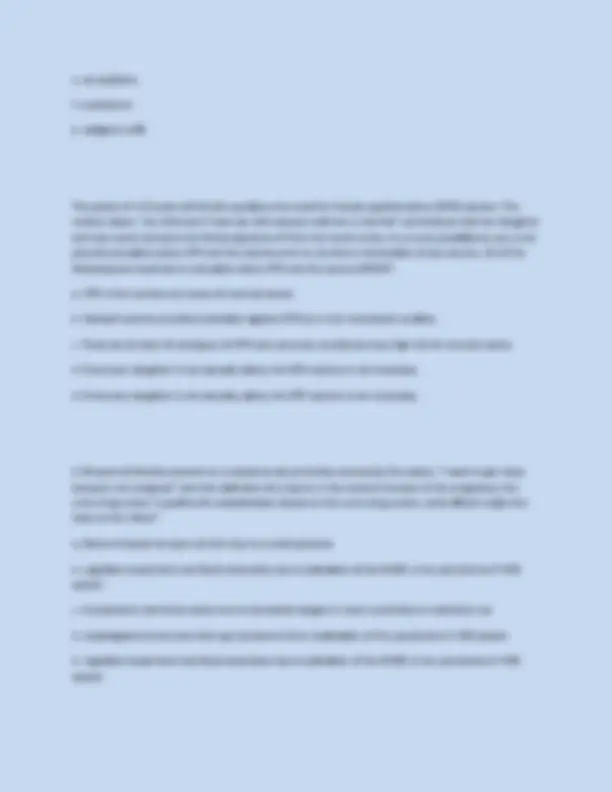
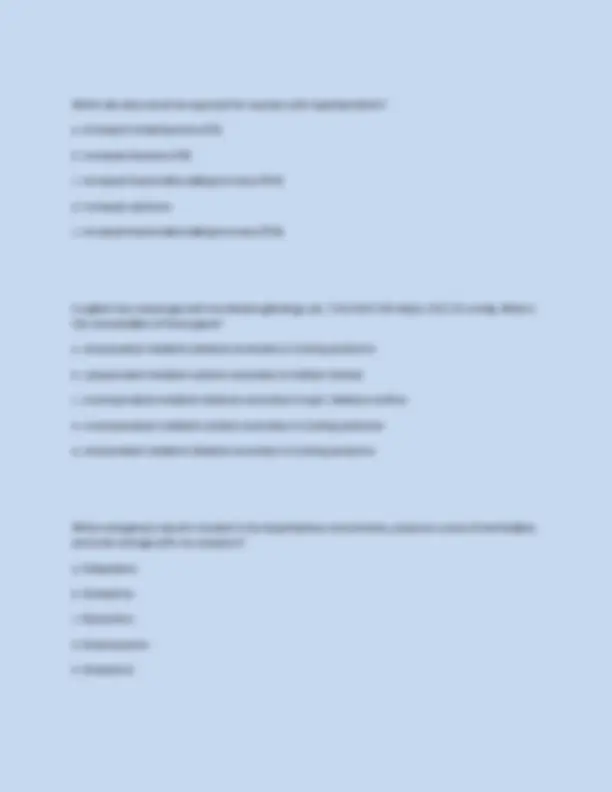
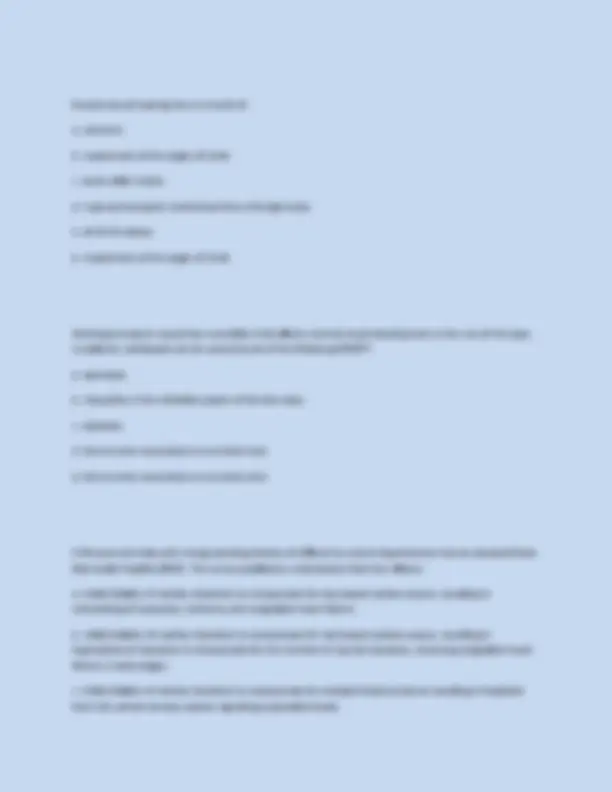
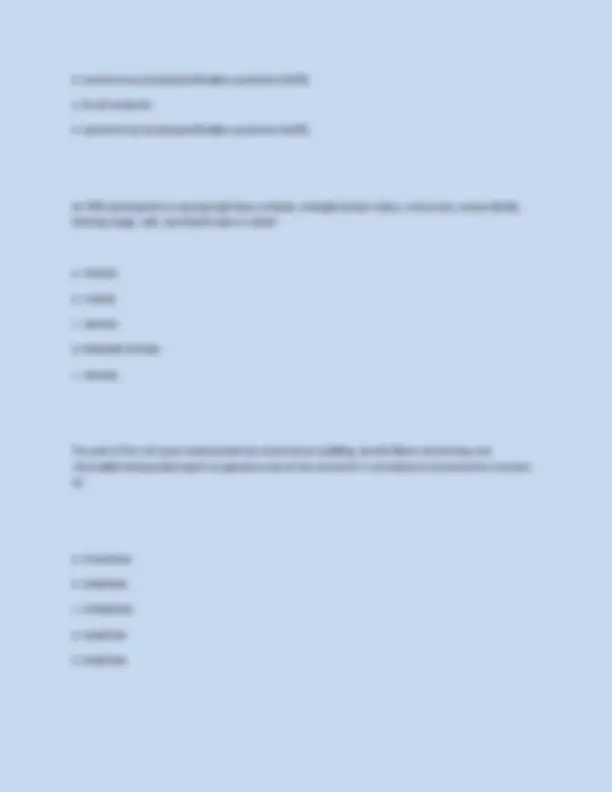
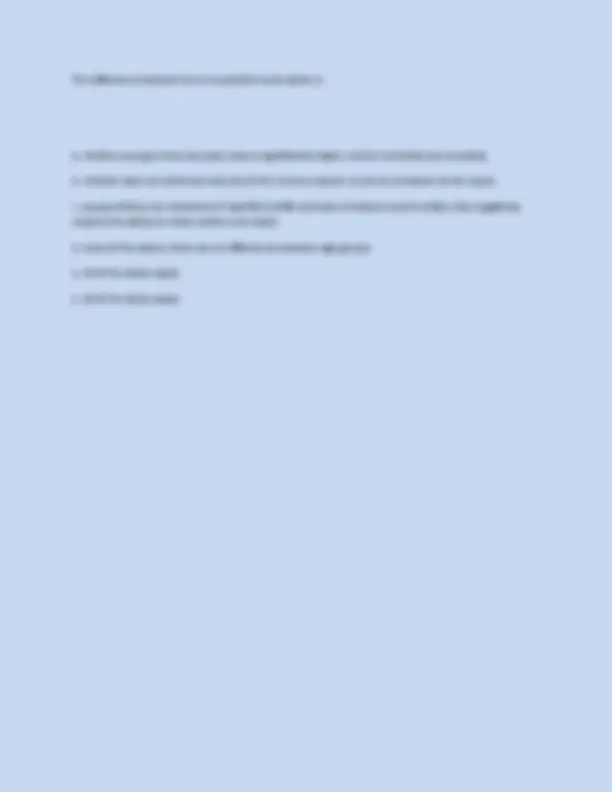


Study with the several resources on Docsity

Earn points by helping other students or get them with a premium plan


Prepare for your exams
Study with the several resources on Docsity

Earn points to download
Earn points by helping other students or get them with a premium plan
Community
Ask the community for help and clear up your study doubts
Discover the best universities in your country according to Docsity users
Free resources
Download our free guides on studying techniques, anxiety management strategies, and thesis advice from Docsity tutors
NURS 501 Patho Exam One Theoretical Foundations Of Advanced Nursing Exam Questions With Answers 2025-2026.
Typology: Exams
1 / 19

This page cannot be seen from the preview
Don't miss anything!












Eukaryotes are:
a. large cells with a nucleus and without organelles.
b. large cells without a nucleus and with organelles.
c. large cells with a nucleus and organelles.
d. large cells without a nucleus or organelles.
c. large cells with a nucleus and organelles.
All of the following are representative of prokaryotic cells EXCEPT:
a. bacteria causing group A beta hemolytic streptococcus.
b. protozoa causing trichomonas.
c. rickettsiae causing Rocky Mountain Spotted Fever.
d. blue green algae of cyanobacteria.
b. protozoa causing trichomonas.
A deficiency of:
a. hexosaminidase A results in the organic acid disorder Pompe disease.
b. hexosaminidase A results in the inborn error of metabolism Phenylketonuria.
c. alpha-glucosidase results in the inborn error of metabolism Pompe disease.
d. alpha-glucosidase results in the organic acid disorder Phenylketonuria.
c. alpha-glucosidase results in the inborn error of metabolism Pompe disease.
The organelle containing histone proteins that allows for DNA replication is the:
a. nucleus.
b. ribosomes.
c. lysosomes.
d. cytoplasm.
a. nucleus
The organelle responsible for protein and steroid synthesis is the:
a. lysosome.
b. nucleolus.
c. Golgli complex.
d. endoplasmic reticulum.
d. endoplasmic reticulum.
The organelle that contains hydrolases which break down proteins, lipids, and nucleic acids in cellular digestion is the:
a. Golgi complex.
c. threshold potential.
d. resting membrane potential.
a. depolarization.
A patient has a long history of smoking. He has blood studies done because he is very tired, is short of breath, and just does not feel well. His blood gases reveal the following findings: pH, 7.3; HCO3 27 mEq/L; CO2, 58 mmHg. What is the interpretation of this blood gas?
a. Respiratory alkalosis
b. Metabolic acidosis
c. Respiratory acidosis
d. Metabolic alkalosis
c. Respiratory acidosis
Which type of nerve fibers transmit pain impulses?
a. Aα fibers
b. Aβ fibers
c. A-delta fibers
d. B fibers
c. A-delta fibers
Where is the gate located that is referred to in the gate control theory of pain?
a. Substantia gelatinosa
b. Marginal layer
c. Nucleus proprius
d. Dorsolateral tract of Lissauer
a. Substantia gelatinosa
In the nociception pathway, a secondary sensory neuron in the spinal cord or brain stem transmits sensory information to the:
a. Basal ganglia
b. Midbrain
c. Thalamus
d. Hypothalamus
c. Thalamus
How do enkephalins and endorphins act to relieve pain?
a. Inhibit cells in the substantia gelatinosa
b. Stimulate the descending efferent nerve fibers
c. Attach to opiate receptor sites
d. Block transduction of nociceptors
c. Attach to opiate receptor sites
Which disorder of temperature regulation is caused by prolonged high environmental temperatures that produce dehydration, decreased plasma volumes, hypotension, decreased cardiac output, and tachycardia?
a. Heat cramps
b. Heat stroke
A patient presents with hyperemia of the conjunctiva for a follow-up visit after a referral to ophthalmology. Records indicate a diagnosis of uveitis. The most likely cause would be:
a. bacterial infection.
b. viral infection.
c. foreign body removal.
d. autoimmune disease.
d. autoimmune disease.
A patient presents with hearing loss and chronic whitish drainage from his right ear for several weeks. Physical exam reveals a white mass behind the tympanic membrane. The most likely diagnosis is:
a. cholesteatoma.
b. acute otitis media.
c. serous otitis media.
d. otitis externa.
a. cholesteatoma.
The sudden apparent arousal in which a child expresses intense fear or another strong emotion while still in a sleep state characterizes which sleep disorder?
a. Night terrors
b. Insomnia
c. Somnambulism
d. Enuresis
a. Night terrors
The structures responsible for hearing include:
a. the semicircular canals, crista ampullaris, and endolymph.
b. the cochlea, crista ampullaris, and perilymph.
c. the cochlea, organ of Corti, and cranial nerve VIII.
d. the cochlea, organ of Corti, semicircular canals, and cranial nerve XI.
c. the cochlea, organ of Corti, and cranial nerve VIII.
Excessive male pattern hair growth in women is called_______ and is caused by___________.
a. hirsutism/increased circulating androgens.
b. polycystic ovarian syndrome/increased circulating estrogen.
c. hirsutism/increased circulating estrogen.
d. female pattern alopecia/increased circulating testosterone.
a. hirsutism/increased circulating androgens.
A patient presents with a diffuse bull's eye rash consisting of erythematous regions surrounded by rings of alternating edema and inflammation on his legs, arms, torso and face. The rest of the exam is unremarkable. The patient had been seen 9 days earlier for strep throat and is taking Penicillin. The MOST likely diagnosis is:
a. urticaria.
b. erythema multiforme.
c. Lyme disease.
d. Stevens-Johnson syndrome.
b. erythema multiforme.
c. neurogenic sepsis due to the thrombosis.
d. shock from reperfusion as the body attempts to heal from COVID-19.
e. none of the above.
b. secondary multi-organ dysfunction syndrome (MODS) related to COVID-19 infection.
Acute burn injury results in _____ shock.
a. hypovolemic
b. septic
c. cardiogenic
d. vasogenic
a. hypovolemic
_____ injury is cellular injury caused by the restoration of physiologic concentrations of oxygen to cells that have been exposed to injurious but nonlethal hypoxic conditions.
a. Hypoxic
b. Hyperoxygenation
c. Reperfusion
d. Ischemic
c. Reperfusion
Which skin lesion is mediated by IgE-stimulated release of histamine, bradykinin, kallikrein, or acetylcholine from mast cells?
a. Dermatitis
b. Scleroderma
c. Urticaria
d. Cutaneous vasculitis
c. Urticaria
Which gland releases secretions that are important in thermoregulation and cooling of the body through evaporation?
a. Sebaceous
b. Apocrine
c. Eccrine
d. Exocrine
c. Eccrine
What is the term for the skin lesions that are elevated, rounded, and firm with irregular claw-like margins that extend beyond the original site of injury?
a. Psoriasis
b. Dermatitis
d. Keloid
c. Acne
d. Keloid
e. an epidemic
f. a pandemic
b. antigenic drift
The parent of a 11-year-old female questions the need for Human papillomavirus (HPV) vaccine. The mother states, "my child won't have sex with anyone until she is married" and believes that her daughter will only marry someone her family approves of from her social circles. As a nurse practitioner, you must provide education about HPV and the vaccine prior to consent or declination of any vaccine. All of the following are important in education about HPV and the vaccine EXCEPT:
a. HPV is the number one cause of cervical cancer.
b. Gardasil vaccine provides protection against HPV but is not considered curative.
c. There are at least 30 serotypes of HPV and some are considered very high risk for cervical cancer.
d. Since your daughter is not sexually active, the HPV vaccine is not necessary.
d. Since your daughter is not sexually active, the HPV vaccine is not necessary.
A 19-year-old female presents to a substance abuse facility voluntarily. She states, "I want to get clean because I am pregnant" and she estimates she may be in the second trimester of her pregnancy. Her urine drug screen is positive for acetaldehyde. Based on this urine drug screen, what effects might this have on the infant?
a. failure of alveoli to open at birth due to a small placenta
b. cognitive impairment and facial anomalies due to activation of the MOES in the cytochrome P- 450 system
c. incompetent semilunar valves due to decreased oxygen in utero secondary to substance use
d. esophageal stricture and short gut syndrome from inactivation of the cytochrome P-450 system
b. cognitive impairment and facial anomalies due to activation of the MOES in the cytochrome P- 450 system
Which lab value would be expected for a person with hypothyroidism?
a. Increased triiodothyronine (T3)
b. Increased thyroxine (T4)
c. Increased thyroid-stimulating hormone (TSH)
d. Increased calcitonin
c. Increased thyroid-stimulating hormone (TSH)
A patient has a blood gas with the following findings: pH, 7.43; HCO3 29 mEq/L; CO2, 51 mmHg. What is the interpretation of these gases?
a. compensated metabolic alkalosis secondary to Cushing syndrome
b. compensated metabolic acidosis secondary to Addison disease
c. uncompensated metabolic alkalosis secondary to type I diabetes mellitus
d. uncompensated metabolic acidosis secondary to Cushing syndrome
a. compensated metabolic alkalosis secondary to Cushing syndrome
Which endogenous opioid is located in the hypothalamus and pituitary, produces a sense of exhilaration, and binds strongly with mu-receptors?
a. Enkephalins
b. Endorphins
c. Dynorphins
d. Endomorphins
b. Endorphins
d. that the BNP is causing vasoconstriction which is causing hypertension.
a. initial dilation of cardiac chambers to compensate for decreased cardiac output, resulting in remodeling of myocytes, ischemia, and congestive heart failure.
What clinical manifestations do allergic, atopic, and stasis dermatitis ALL have in common?
a. petechiae and hyperpigmentation
b. edema and vesicular lesions
c. crusted lesions with petechiae
d. Erythema and pruritus
d. Erythema and pruritus
_____ of the epidermis initiate immune responses and provide defense against environmental antigens.
a. Langerhans cells
b. Merkel cells
c. Keratinocytes
d. Melanocytes
a. Langerhans cells
A 17-year-old male from Pakistan presents for his first exam since immigrating to the United States. He arrived on a compassionate visa needing a bone marrow transplant for treatment of an inherited blood disorder called Thalassemia Major that is causing significant anemia requiring monthly blood
transfusions and damaging his liver and pancreas. He is very ill in appearance with bronzed, yellow- brown skin color. Blood work reveals elevated liver functions tests (over 10 times normal) and elevated serum ferritin (in the 1,000s, normal is about 50-100). The nurse practitioner concludes that these findings are consistent with:
a. Addison's disesase.
b. hemosiderosis.
c. normal for someone with Thalassemia Major.
d. liver tumor.
b. hemosiderosis.
A 23-year-old female is attempting to reduce her weight by skipping meals every day. What education would the nurse practitioner provide from a pathophysiology perspective so that this patient may understand why skipping meals will not reduce her weight in a healthy manner?
a. starvation increases the breakdown of triglycerides which enter the liver
b. the breakdown of triglycerides increases lipoproteins (cholesterol)
c. the cycle of starvation, breakdown of triglycerides, and increase in lipoproteins can cause nonalcoholic fatty liver disease
d. nonalcoholic fatty liver disease can result in cirrhosis
e. all of the above are important in the process of patient education
e. all of the above are important in the process of patient education
A defect in the apoptosis pathway leading to non-malignant but potentially life threatening lymphoproliferation, autoimmune disorders, and some forms of cancer is called:
a. propionic acidemia (PA)
b. Tay Sachs disease.
c. Pompe disease.
The difference between burns in pediatrics and adults is:
a. children younger than two years have a significantly higher risk for morbidity and mortality.
b. children have not achieved maturity of the immune system so are at increased risk for sepsis.
c. young children are intolerant of rapid fluid shifts and have immature renal function that negatively impacts the ability to retain sodium and water.
d. none of the above, there are no differences between age groups.
e. all of the above apply.
e. all of the above apply.